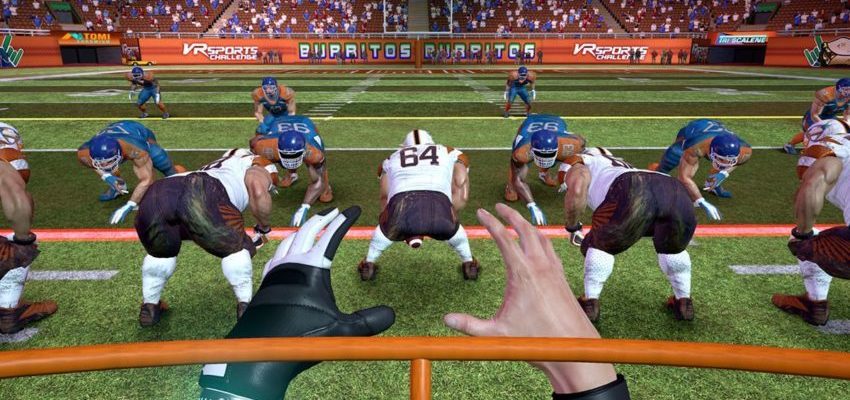Content Table:
Playing Online Sports Games in Virtual Reality
The world of gaming has evolved dramatically over the past few decades. From simple pixelated graphics to immersive virtual reality (VR) experiences, technology has transformed the way we play and interact with games. One of the most exciting developments in recent years is the advent of online sports games in virtual reality, bringing the thrill of physical sports into the comfort of our homes.
The Evolution of Sports Gaming
Sports games have always been popular among gamers, offering the chance to engage in their favorite sports digitally. High-quality 3D graphics, realistic animations, and special effects have made these games increasingly lifelike. Titles featuring soccer, baseball, basketball, and more have allowed players to experience the excitement of sports without leaving their living rooms.
Before the rise of advanced software and computer technology, playing sports meant heading outdoors to a field or court. The idea of participating in a sport through a computer screen was unimaginable. However, with the rapid advancement in graphics and simulation technology, virtual renditions of these games have become not only possible but incredibly engaging.
Virtual Reality: A Game Changer
Virtual reality has taken sports gaming to a whole new level. By donning a VR headset, players are transported into a 360-degree immersive environment where they can interact with the game world in a more natural and intuitive way. This technology bridges the gap between the physical and digital realms, providing a more authentic sports experience.
In VR sports games, players use motion controllers to mimic the movements of real sports activities. Swinging a virtual tennis racket, throwing a football, or shooting a basketball feels more realistic than ever. The physical involvement adds a layer of excitement and can even provide a moderate workout.
Popular VR Sports Games
Several VR sports games have gained popularity for their immersive gameplay and realistic mechanics:
- VR Sports Challenge: This game offers a variety of sports like football, basketball, hockey, and baseball. Players can experience the intensity of professional sports with lifelike graphics and responsive controls.
- Eleven Table Tennis: Known for its precise physics and realistic gameplay, this game allows players to enjoy table tennis matches against AI or other players online.
- Beat Saber: While not a traditional sport, this rhythm game combines music and physical movement, requiring players to slash beats with lightsabers in VR. It’s a fun way to get active and improve hand-eye coordination.
- Echo Arena: Set in zero gravity, this game combines elements of sports and sci-fi, where players compete in a futuristic sport resembling ultimate frisbee.
One of the significant advantages of online VR sports games is the social interaction they offer. Players can connect with friends or meet new people from around the world, competing or collaborating in virtual environments. Voice chat and avatars enhance the social experience, making it feel like you’re actually present with others.
This connectivity has been especially valuable during times when physical socialization is limited. VR provides an avenue for social engagement, teamwork, and friendly competition, all within a safe virtual space.
Challenges and Considerations
Despite the exciting possibilities, there are challenges to consider with online VR sports gaming:
- Equipment Costs: High-quality VR headsets and compatible hardware can be expensive, potentially limiting accessibility for some players.
- Physical Space: VR gaming often requires ample space to move safely without obstacles, which may not be feasible in smaller living areas.
- Motion Sickness: Some players may experience discomfort or motion sickness during VR experiences, although advancements are continually reducing these effects.
The Future of Sports in Virtual Reality
The future looks promising for online sports games in VR. As technology advances, we can expect even more realistic graphics, improved motion tracking, and enhanced interactivity. Developers are exploring ways to integrate haptic feedback, allowing players to feel physical sensations corresponding to in-game actions.
Additionally, the integration of VR into professional sports training is becoming a reality. Athletes can use VR simulations to practice and refine their skills in a controlled environment, demonstrating the technology’s potential beyond entertainment.
Conclusion
Playing online sports games in virtual reality represents a significant leap forward in gaming and sports entertainment. It combines the physicality of real-world sports with the convenience and versatility of digital platforms. Whether you’re a seasoned gamer or a sports enthusiast looking to try something new, VR sports games offer an engaging and immersive experience that’s worth exploring.
As technology continues to evolve, the line between virtual and reality will blur even further, opening up new possibilities for how we play, connect, and compete. So strap on a VR headset, pick up those motion controllers, and step into the exciting world of virtual sports.



